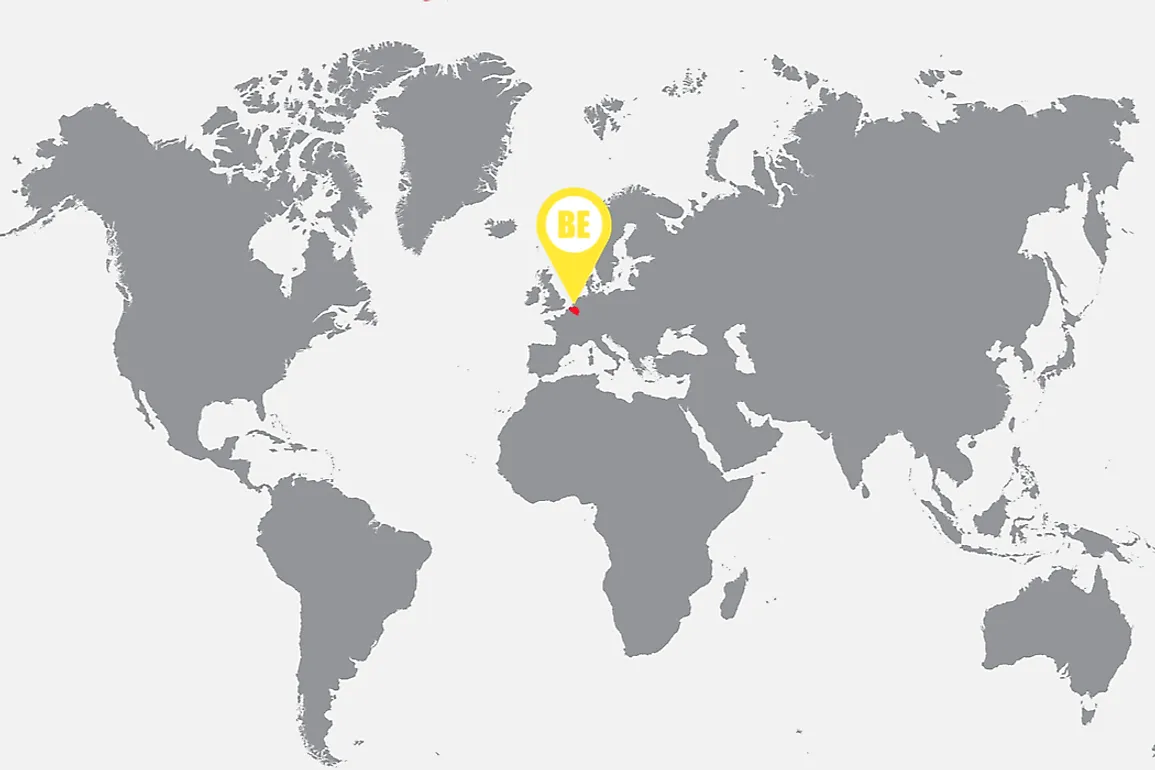What Continent Is Belgium In?

The Kingdom of Belgium is a federal state in Western Europe. This country is a founding member of the European Union and also hosts the NATO headquarters. Belgium has three regions; the Dutch-speaking Flanders region in the North, the French-speaking Wallonia region, and the Brussels capital region which is bi-lingual having both Dutch and French speakers. Brussels is an enclave inside the Flemish region. The current ruler is King Philippe I and the Prime Minister is Charles Yves Jean Ghislaine Michel.
Geography
Belgium borders four European countries and the North Sea. This country shares 385.25 miles of its southern border with France, 103.77 miles of its eastern border with Germany, 91.96 miles of the southeastern border with Luxembourg, and 279.62 miles of the northern border with the Netherlands. The country covers a total land and water area of 11786.93 square miles and lies between latitudes 49°30 and 51°30 N and longitudes 2°33 and 6°24 E. Belgium has three geographical regions; the Ardennes uplands, Coastal plain, and the central plateau. The Ardennes uplands extend towards France and are forested, rugged, rocky with gorges and caves. The coastal plains are mainly made up of sand dunes and polders. In terms of phytogeography (distribution of plant species), Belgium lies between Central European and the Atlantic European provinces of the Circumboreal Region within an Atlantic mixed forest ecoregion.
Climate
The climate of Belgium is a temperate maritime climate which comes under the influence of the Atlantic Ocean and North Sea (Cfb Classification of warm temperate humid climate). Summers are cool although sometimes easterly winds may cause this season to experience warm and dry continental weather. Winters are moderate although the temperatures may fall below zero. There is precipitation most times of the year but a somehow drier period runs from April to September. During winter and fall, strong low-pressure systems from the Atlantic sometimes result in poor weather and gales.
Demographics
As of 2015, Belgium had a population of 11,190.845 people with most, 94% living in urban areas. The country has a population density of 952 people per square mile. Flanders region is the most densely populated area while Ardennes is the least. Brussels has a population of 1,167,941 living in its nineteen municipalities. The two main linguistic groups in Belgium are the Dutch-speaking Flemish people who constitute 59% of the entire population and the French-speaking Walloon community that make about 40% of the population. There are some minority German speakers mostly in the East Cantons. A good number of the Flemish and Walloon communities speak both languages. The immigrant population is mostly Italian, followed by people from different countries including Congo, Morocco, India, Algeria, and Turkey among many others.
Major Tourist Attractions
Tourism contributes to 2.8% of Belgium’s GDP and employs close to 142,000 people. Belgium is easily accessible from different parts of Europe and receives over ten million visitors annually. Most tourists visit the modern coastlines and the Ardennes region. Brussels and some Flemish cities are popular for art and cultural tourism. Architecture, war sites, and artistry summarise tourist attraction in Belgium. Bruges is top on the list, a home to the belfry and Halle a building dating back to the medieval times that was a market hall which is an architectural marvel well-preserved. At Ghent, the grand Cathedral sits with its beautiful exterior and the internal artwork such as The Altar of Ghent are remarkable and unforgettable. The grounds of the battle of Flanders around Ypres are both historical and a pilgrimage site for many tourists at the preserved cemeteries of the British and German soldiers of the First World War. At Waterloo, a lion sculpture commemorates the place where Napoleon Bonaparte lost the battle against the British Allied Army. The Grand Place in Antwerp, Mons Old Town, St. Peters Church, Leuven, Basilica of the Holy Blood, and Bruges preserve the Belgian artistry and architecture while giving tourist sights to behold.











